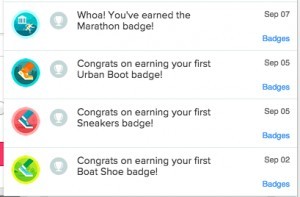Molly Fletcher's Blog, page 20
November 18, 2015
Achieving Optimal in 2016
Atlanta Braves Legend Tom Glavine Headlines Leadership Event On December 8
— Tickets On Sale Now for Achieving Optimal in 2016 —
ATLANTA, November 18, 2015— Tickets are on sale now for Achieving Optimal in 2016, a single-day leadership experience taking place on December 8, 2015 at the Piedmont Driving Club in midtown Atlanta.
Built around the theme of “Achieving Optimal,” attendees will hear from Atlanta Braves legend Tom Glavine, motivational speaker and former top sports agent Molly Fletcher, and New York Times best-selling author and success coach Tommy Newberry.
“Our goal is to give individuals the tools to live and lead with intention in 2016,” said Fletcher. “We want to empower people to create meaningful change in their lives that leads to real results.”
Space is limited and the format will be a mixture of keynote topics and coaching focused on individual growth. Sessions include:
Tommy Newberry, Success Is Not An Accident
Molly Fletcher, Maximizing Strategic Relationships
Tom Glavine, Peak Performance
Newberry is the author of the New York Times best-seller The 4:8 Principle and Success Is Not An Accident. A pioneer in the executive coaching field, his high-impact coaching programs have helped thousands of leaders work less, earn more and enjoy greater satisfaction with the right accomplishments.
Hailed as the “female Jerry Maguire” by CNN, Fletcher parlayed a successful career as a top sports agent into an influential platform as the CEO of her own company, a popular motivational speaker, and author.
A two-time Cy Young Award winning pitcher, Glavine etched his name into baseball’s record books as a longtime pitcher for the Atlanta Braves. In 2014, Glavine was elected to Major League Baseball’s Hall of Fame in his first year on the ballot.
For tickets or more information on Achieving Optimal in 2016, visit http://achievingoptimal.com or call 404.836.4848.
###
Media Contact: Sprague Paynter (404) 839-0448 or sprague@mollyfletcher.com
Molly Fletcher helps inspire and equip game changers to dream, live and grow fearlessly. A keynote speaker and author , Molly draws on her decades of experiences working with elite athletes and coaches as a sports agent, and applies them to the business world. Sign up here to receive our monthly newsletter.
The post Achieving Optimal in 2016 appeared first on Molly Fletcher.
November 17, 2015
4 Traits of an Ideal Teammate
 When you think about the type of teammate you most want on your corporate or sports team, what qualities do you desire? How about the ability to enjoy someone else’s success? Maybe work ethic and focus? Or the guts to hold others accountable? A sense of humor?
When you think about the type of teammate you most want on your corporate or sports team, what qualities do you desire? How about the ability to enjoy someone else’s success? Maybe work ethic and focus? Or the guts to hold others accountable? A sense of humor?
All of those attributes are what I think make an indispensable teammate, and here’s more about why.
Ability to enjoy someone else’s success.
There’s no room on great teams for a fake. A great test of sincerity is whether a teammate can truly enjoy someone else’s success—truly be happy for someone else achieving regardless if you benefit. When my friend, and long time client, John Smoltz was inducted into baseball’s Hall of Fame, he described a teammate who epitomized this humble perspective:
“I remember sitting in the locker room at Tiger Stadium, a fish out of water, scared to death…. Alan Trammell came up to me and said, ‘Hi, I am Alan Trammell. Anything I can do for you, don’t hesitate to ask. This house is your house…’ It was as if he had introduced and gave me a baton and said now pay this forward every chance you can, because this game has a chance to impact a lot of people.”
Work ethic and focus.
An indispensable teammate must demonstrate these fundamentals. Work ethic is the result of inner drive. This teammate wants to make himself or herself better and raise the performance of the team, and willingly puts in the time and the work. This teammate is never dogging it, always giving it their all, ready to step up both when people are watching and even when they are not.
At the highest level, work ethic and focus become almost as natural as breathing, because this teammate has absorbed the attributes into his or her identity. As Dwyane Wade of the Miami Heat said: “The thing is, I don’t do these things for recognition, being a good teammate, being a positive member of the community. I do them because those things make me whole and complete.”
The guts to hold others accountable.
Authenticity inside of relationships takes courage. At times, it demands vulnerability and sacrifice. The payoff is the ability to form more authentic connections. With deep trust, teammates can have the tough conversations about meeting expectations. This is holding one another accountable in an upfront way, avoiding gossiping or backstabbing. This type of closeness keeps people on the team and investing in its other members. They don’t want to jump ship for a flashier job or even more money.
One example of accountability came from Dean Smith, the legendary coach at North Carolina. He came up with a simple gesture that showed accountability and fostered loyalty: Anyone who made a basket was to point to the teammate who made the assist. It was his way of teaching his players and spectators that every person on the team is connected. What if we embraced that kind of acknowledgement in the board room? Or at all staff meetings?
Peak performance rises from a culture of selflessness. Indispensable teammates focus on giving to one another. They want to be pointed out for their contributions, but more important, they want to point to one another.
Sense of humor.
Appropriate humor is a pressure release. In the intensity of competition, this teammate is putting everything he or she has into success, and a sense of humor is all about perspective and the ability to step away from a situation long enough to see it in a different way. Humor keeps us from taking tasks so seriously that the tasks get harder to complete.
For NBA San Antonio Spurs coach Gregg Popovich, humor signals a generosity of spirit. As he puts it:
“Having a sense of humor is huge to me and to our staff because I think if people can’t be self-deprecating or laugh at themselves or enjoy a funny situation, they have a hard time giving themselves to the group.”
Your Game Changer Takeaway
The teammate that you cannot live without has great character. You find out in crises what that person is made of. He or she is going to jump in battle with you instead of running away. I encourage you to share this with your teammates– a fresh perspective I hope inspires, challenges and enhances your team!
Molly Fletcher helps inspire and equip game changers to dream, live and grow fearlessly. A keynote speaker and author , Molly draws on her decades of experiences working with elite athletes and coaches as a sports agent, and applies them to the business world. Sign up here to receive our monthly newsletter.
The post 4 Traits of an Ideal Teammate appeared first on Molly Fletcher.
November 10, 2015
Speak Up: How to lose your fear and find your voice
 Speaking up for what’s right—for what you need to say and others need to hear—is so important. And we also can agree that it sure can be hard.
Speaking up for what’s right—for what you need to say and others need to hear—is so important. And we also can agree that it sure can be hard.
I believe what keeps us from speaking up in certain relationships is fear, and I want to share some techniques that will help you lose the most common fears about speaking up now.
Fear: People will reject me and I can’t handle that.
How to lose it: Fear of rejection is real. It is a script that runs in our head, and I’m very familiar with it.
When I speak to hundreds or thousands of people, I always want to connect with and deliver value to EVERY single person in an audience. I don’t want rejection on stage; I want connection. Yet no matter how confident and prepared I feel, there’s always that anxious feeling.
There’s no use hoping it will go away. The best way to counter this fear is to replace this script. Let’s consider the opposite.
What if we didn’t worry about what other people think? How freeing would that feel? I’m not there yet myself, but isn’t that an inspiring, intriguing concept?
The fear of speaking up is very real, especially for many women. A recent study reported by the Wall Street Journal (with some great tips, by the way) found that women were more sensitive to relationships in the group, and were more anxious about how they were performing and being perceived by others.
As one of the only female sports agents, speaking up was a fear I had to overcome early in my career. Working through this fear taught me the power of taking small steps. Potential clients automatically viewed me as not knowing their world, so talking to a baseball player about a four-seamer or a two-seamer initially made me nervous. I was so careful about what I said that I wasn’t saying anything. I got unstuck by taking small steps, picking some spots where I could test how my knowledge would land with these guys.
Losing the fear of rejection is a journey. It’s a lot like learning anything. You start with small steps, gain confidence, take another. They will lead to big steps.
Fear: Nothing will change by me speaking up.
How to lose it: The truth is that one factor will change when you speak up, and it’s you.
Here’s the common scenario. We’ve all been in organizations, meetings, or on calls where fear takes over. We feel as if we say something nothing will change, so why bother. The decision makers aren’t going to take my input, and that will invalidate what I have to say.
Yuck. When that happens, what a stifling moment, day, week, even life to live through! The good news is that when that happens, you have a chance to connect instead of fold your cards.
In any kind of team setting, the opinions and behaviors of others matter. Yours included! The team you are on right now most likely is not the only group like this that you will participate in. Now is an important time to practice a new habit of maintaining your sense of self-worth around others.
By speaking out in a thoughtful, clear manner, keeping mindful of body language and an even tone, you will practice making your message about your truth. You will take back the power of your message. What you have to say is not dependent on these detractors. Even if they persist, your self-respect will increase.
Stick to your important message and continue working to connect, share and listen to the people on your team. Model the behavior that you want from others.
Fear: I am not sure I can handle the truth.
How to lose it: This fear describes a natural inclination to be defensive. We all have a fragile part inside ourselves and fear can easily take root there.
We reject ourselves when we know in our hearts that we had more and we didn’t deliver. Or we didn’t deliver it just how we wanted to do. Or we were misunderstood when we delivered it. It’s even harder to hear someone else voice that criticism.
Let me tell you how not to lose this fear. In seventh grade, three girls leaned against my locker and told me, “We are going to kick your ***.” It was their mission to make my life miserable.
Why? That’s what I became obsessed with. I wanted to know that, and I desperately wanted them to understand my complete horror at their threat to “rearrange my face.” This made me overly concerned with finding a way to connect to them. But my curiosity and need to connect could not overcome my fear, so I said nothing. I clammed up, and I never found out why I was targeted, and they never knew how much they hurt me.
It’s important to know that we all have limits. Fear is a message to you that there is a limit inside you. Sometimes we can do everything possible to move past our fear, and the best way forward is to find another environment.
There is nothing wrong with working on your fear of speaking your truth and discovering that you are and may always be ostracized for doing so. No team will thrive in that kind of atmosphere for long. Your fear can be a signal to do more than work on yourself. It may be time to change your surroundings.
Your Game Changer Takeaway
Accept your fear of speaking up and seek to understand it. Whether you are afraid of rejection, fearful of not getting any results or doubt your ability to handle the truth, you have a lot of good company. Rethinking your mental scripts about these fears, taking small steps to build your confidence and evaluating your environment can help you gain greater fearlessness to speak your truth in even the most difficult situations.
Molly Fletcher helps inspire and equip game changers to dream, live and grow fearlessly. A keynote speaker and author , Molly draws on her decades of experiences working with elite athletes and coaches as a sports agent, and applies them to the business world. Sign up here to receive our monthly newsletter.
The post Speak Up: How to lose your fear and find your voice appeared first on Molly Fletcher.
November 3, 2015
Why It’s Never Too Late to Reinvent Yourself
 Fearless reinvention is a topic near to my heart. People often ask me about how I could leave my secure, comfortable job as a sports agent to pursue my dream of speaking and writing about reaching your greatest potential and achievement. What I think resonates with people is that I went all in. I wasn’t miserable or forced out of my old job. I was clear on what my dream was and the risk involved. When I left the agency where I had been for almost two decades, I had three keynote speeches booked that added up to about 5% of my base salary—yikes.
Fearless reinvention is a topic near to my heart. People often ask me about how I could leave my secure, comfortable job as a sports agent to pursue my dream of speaking and writing about reaching your greatest potential and achievement. What I think resonates with people is that I went all in. I wasn’t miserable or forced out of my old job. I was clear on what my dream was and the risk involved. When I left the agency where I had been for almost two decades, I had three keynote speeches booked that added up to about 5% of my base salary—yikes.
Did I know I would make it? No, but I was comfortable betting on myself and embracing the unknown. I had created choices for myself, but it was up to me to pull the trigger. Maybe you are doubting your ability to do the same, so I want to share what I’ve learned with you: Here’s why it’s never too late to reinvent yourself.
The clue to your reinvention is right here; pinpoint it.
We all gravitate to what we are good at, and in your current work you are doing something that springs from your passion. This thing is going to launch you to success in your reinvention. Here’s what I mean.
As a sports agent, I thrived building relationships. I love taking a raw relationship and building it into an unbreakable bond. The higher the stakes, the more I wanted to succeed, and the more I did. As I repeated this daily for multiple years, relationship building became second nature to me. When I considered leaving my career, this foundational skill gave me the confidence to believe I could get on a stage and establish an awesome connection with an audience of hundreds or thousands of people. It may have been a completely different career, but the premise was the same. To thrive, I would have to turn these raw connections into authentic relationships.
Your ability to authentically and authoritatively do what you are most passionate about is growing inside you right now. That gift is going to really blossom in your reinvention. I firmly believe and love the idea that when we follow our passions, the career follows us.
Don’t wait for it to happen to you; you make it happen.
One of the biggest barriers to reinvention is the idea that something or someone is going to come along and make it happen. Reinvention remains a fantasy because with that kind of thinking, a person doesn’t have to look inside himself or herself to find the guts to pull that trigger.
One way to reframe this challenge is to look at your new identity as a gift to yourself. Your next “self” is going to do more of what you want and what you uniquely can give the world, and less of what you don’t want. That’s not just the 80-20 principle. Reinvention boils down to one powerful word: freedom.
Relentlessness is critical.
Pushing to a new level of achievement creates a new set of challenges, and you have to be ready to constantly reposition yourself. This means suffocating fear for ambition and cultivating an insatiable appetite for learning. Here’s a sample of self-talk that is necessary for anyone who is going all in to reinvent: “I want to break new ground and go beyond what others see as my best to discover my ultimate potential. To do that, I know I must be relentless.” If you strive to be a pioneering achiever in the niche that suits you best, you need to be relentless too.
Find and stay in the company of reinventors and their mentors.
The most creative minds are constantly reinventing to get the most out of life. The best get better because they want more, do more, and inevitably get more. It is so easy to be a sleeper, feeling like you have done enough and the rest will take care of itself. But the reinventors are doers, not sleepers. They are always looking for the next opportunity or the next great idea. Think of people like Arthur Blank, Mark Cuban, and Steve Jobs. The trailblazers of our time are constantly reinventing, reassessing, and reorganizing their businesses. The second you think they have no more tricks up their sleeves, they wow you with a success of enormous proportions.
Steal this important secret from them: Surround yourself with people that are smarter than you in various areas, people who complement your skill set and enhance what you can deliver. This is how dynamic lives and careers are built and maintained. It’s exciting to find and be a dedicated and intelligent mentor and trusted advisor. Seek out people who understand that maintaining greatness is just as difficult, if not more, than reaching greatness, and who are willing to be on your team. It takes more than one person to do the hard work day in and day out to summit the mountain and handle the unexpected terrain that comes with reinventing. As you navigate your journey and fearlessly reinvent yourself, share your story because that courage is contagious and may inspire someone else.
Your Game Changer Takeaway
Reinventing yourself is a perfect example of getting back what you put into something, and so much more. By setting aside fear, finding relentlessness and the company of other reinventors, you will build off the success that is incubating inside you right now. You are not at the mercy of life events as you move to the place where you can do the best work that only you can do. Stop making excuses and start making that life you’ve always wanted! It’s never too late.
Molly Fletcher helps inspire and equip game changers to dream, live and grow fearlessly. A keynote speaker and author , Molly draws on her decades of experiences working with elite athletes and coaches as a sports agent, and applies them to the business world. Sign up here to receive our monthly newsletter.
The post Why It’s Never Too Late to Reinvent Yourself appeared first on Molly Fletcher.
October 28, 2015
Does Your Team Have Too Much ‘Talent’?
The 2015 World Series starts this week,  and it’s a good time to talk about talented teams. I’ve heard you can never have too much talent. I don’t believe that.
and it’s a good time to talk about talented teams. I’ve heard you can never have too much talent. I don’t believe that.
What I do believe is that success in a team sport, and in most businesses, depends on the right talent, not the most talent. To take that one step further, too much talent actually can block your success when it comes at the cost of team cohesion.
The concept of talent must shift in the corporate world. Technological process means that in the next few decades, robots and smart machines are projected to take over more than half of U.S. jobs. The remaining jobs will be those that demand more complex thinking and emotional intelligence that technology can’t replicate (at least not yet!). For corporate teams, ‘talent’ must become more about a team member’s ability to think critically, innovate, create and emotionally engage with others.
Here’s more of why and how we need to rethink talent—and read to the end for my World Series pick that is based on this important belief.
The Problem With Too Much Talent
A recent piece in The Atlantic pointed out how too many alpha egos diminish a team’s potential. In both business and sports, organizations compete fiercely to attract the top talent. This makes sense—top talent leads to better performance, right? Research shows this is true only to a certain extent. Too much talent actually negatively impacts team performance.
Why is this? Organized groups depend on a clear hierarchy to function at their peak. When leadership and expectations falls on superstars, it’s easy for the rest of the team to check out.
Whose job is it? The superstars’ of course. They want it. They dominate.
Meanwhile, your key supporting players don’t see a place to fit in. They can’t. It’s hard to breathe when all those egos take over.
Accountability and Coachability > Talent
A stable of star team members must check their egos at the door. It’s the only way that they can hold each other accountable, which is one of the keys to a successful team. Accountability goes hand in hand with execution.
Instead of talking about talent, let’s talk about coachability. Like high performing athletes, great employees are coachable. She or he embraces feedback and has a growth mindset. This perspective is based in a desire to learn. It embraces challenges, persists despite obstacles, thinks of effort as a means to mastery, and welcomes the chance to learn from constructive criticism.
A person with this mindset maximizes his or her talent. He or she views others’ success as a window into lessons and inspiration for even greater personal success, fueled by the power of free will (not expectation).
A coachable team member is like superglue. He or she helps a team of many talent levels perform greater than the sum of its parts.
So Whose Talent Will Win the 2015 World Series?
I consider myself a Midwesterner, so my heart is more with the Kansas City Royals over the New York Mets.
But more than my roots, I am picking the Royals because they grind it out and find ways to win, a feat only possible through great team chemistry and an even distribution of the right talent.
Ultimately, this Series will be less about breakout stars (sorry, Mets’ hotshot pitchers), even though you’ll see plenty of them in the headlines. The Royals are more about players embracing their roles, and I believe that will make the difference.
Your Game Changer Takeaway
How have you defined talent on your team? Take a hard look at what makes a team member stand out in that regard. You get what you reward, so make sure that the talent that you most need on your corporate team—the glue of coachability and accountability—is defined specifically and recognized often. Check out my team building page for more ideas, and let me know what’s working for you.
Molly Fletcher helps inspire and equip game changers to dream, live and grow fearlessly. A keynote speaker and author , Molly draws on her decades of experiences working with elite athletes and coaches as a sports agent, and applies them to the business world. Sign up here to receive our monthly newsletter.
The post Does Your Team Have Too Much ‘Talent’? appeared first on Molly Fletcher.
October 19, 2015
When Negotiating Gets Emotional, Try These 3 Tactics
 Most people hate to negotiate, for a lot of reasons. That means most of us start from a place of emotion. When we don’t want to do something, or we’re afraid, we’re starting out at a disadvantage. And in my experience, that kind of starting point hurts our chances of making the best deal.
Most people hate to negotiate, for a lot of reasons. That means most of us start from a place of emotion. When we don’t want to do something, or we’re afraid, we’re starting out at a disadvantage. And in my experience, that kind of starting point hurts our chances of making the best deal.
It’s easy for that emotion to snowball as we negotiate. I know because through negotiating more than $500 million in contracts and building lasting relationships, I’ve seen emotion try to sabotage deals and succeed.
The good news: I have tactics that work. Here are three favorites.
1. Commit to sticking with the facts.
I get frustrated when the other side refuses to negotiate. It’s a take it or leave it situation. I never deny the frustration or whatever emotion is going on. I work around it by focusing on facts.
Facts are the bedrock of negotiating. Collecting as much information as possible is part of Setting the Stage and Finding Common Ground (two key steps in the process that are detailed in my book, A Winner’s Guide to Negotiating: How Conversation Gets Deals Done). When emotion runs high, our home base are the facts we have gathered.
Don’t underestimate the power of facts to cut through emotion. Facts are our destination, and if we keep our eyes on where we are going, emotion is more likely to take a back seat.
2. Promise to not take it personally.
In negotiating, we become vulnerable to emotion because we are risking rejection. No one likes that. But we don’t have to take it personally.
It’s important to realize that while the outcome of the negotiation may mean a great deal to us, the results are separate from who we are. This distance is so important. The more that we make it about us, the more emotional we are likely to get and the less likely we are to reach a great result that works for both sides.
Here’s what works for me: The practice of gratitude. This helps me stay centered and keep my perspective and focus. It is a go-to tool when I realize I am taking things personally and need to dial back to the facts.
Gratitude forces us to shift our mindset. By pausing to be grateful for the little and the big things in life, we can find more mental space for the next action we need to take in negotiation. Some of my list of things I am grateful for are good health, faith, family, the Midwest values that I was raised in, my sense of humor, big brothers who treated me like a little brother when we were growing up, sports and all its emotions and lessons, my team at MFC, my speaking platform that allows me to create connections and improve lives… and my running shoes.
Gratitude as described above is more of a personal, private practice to help me keep moving forward, but the results are very outward. I know that I project true focus because gratitude helps me stay in the balance.
Gratitude has a counterintuitive place in negotiation. Authentic thankfulness can make a powerful connection to the other side. Telling someone that we are sincerely grateful that they listened, that they responded promptly, that they respect us—all this can make a personal connection.
3. Look from the upper deck with curiosity.
In a ballpark or stadium, the upper deck are the seats furthest away from the field of play. They are usually the cheapest seats and not ones that anyone would want first. The upper deck is where I go mentally to avoid getting emotional or deal with emotion that comes up in negotiating.
By moving to the upper deck, I have put on a new, wider lens on what is at stake. I can’t see as many details, but I can still see the big picture. It forces me to reframe the negotiation less personally and more factually. Call it the upper deck or quiet time, but it’s the space we need to get a different view of all the action so far, and process it to our greatest benefit.
Distance (mental or physical) is so important because we can examine all the tools at our disposal. Curiosity is such a big one. When the other side expresses resistance or hostility, and we respond with curiosity and openness, we move away from personalities and toward understanding the problem.
When we get defensive or experience strong emotion that threatens our ability to negotiate, go to your upper deck. Make the conscious shift to curiosity. You’ll be amazed how the lines of communication are strengthened.
Your Game Changer Takeaway
No matter how we feel about negotiating (or during it), we can minimize the risks of strong emotion to a positive outcome. Commit to stick with the facts, promise not to take it personally and get curious from your upper deck. These tactics will help you find more balance and keep your center when emotions get high in negotiating.
Molly Fletcher helps inspire and equip game changers to dream, live and grow fearlessly. A keynote speaker and author , Molly draws on her decades of experiences working with elite athletes and coaches as a sports agent, and applies them to the business world. Sign up here to receive our monthly newsletter.
The post When Negotiating Gets Emotional, Try These 3 Tactics appeared first on Molly Fletcher.
October 13, 2015
3 Fearless Strategies for Better Sales Training
Sales require authentic passion and fearlessness,  so one common question I get is: How can you keep your sales training fresh and energetic?
so one common question I get is: How can you keep your sales training fresh and energetic?
Let’s look at your focus.
No doubt your sales training covers all aspects of your product and what makes it stand out for the customer. And your sales training follows a process, in which your people learn the nuts and bolts of how your company gets and closes deals..
But….
Sales training that only focuses on product and process misses the mark. Better sales training fearlessly focuses on people. The more competitive your field, the more likely it is that people (not product or process) are the difference between your company surviving and thriving.
Here are three fearless strategies to improve your sales training through relationship building. (For more, see this link.)
Strategy 1: Approach a client or prospect with full awareness.
Through training in 360 Degree Awareness, a person in sales becomes fearless at listening, learning and offering. He or she understands that relational sales are far more valuable than transactional sales.
One of the biggest gifts that you can give a customer is simplicity. Their world is complex, and your product or service will make their lives better and likely simpler. Finding that common ground requires trust and can lead to discovering new win-win scenarios. Full awareness leads to clarity of what your customer needs and opens the door to creative problem solving.
Strategy 2: Create relationships through the best intentions.
Fearless sales training involves inspiration. Your team should feel like they know how to tell your best story and convey your values, and build relationships that will benefit them and your company now and in the future.
Relationships don’t happen overnight. They are nurtured carefully over time. The Favor Column is one of my favorite ways of relationship building, and it’s particularly effective for people in sales.
How can you help your most important business contacts—those you already have and those you want to gain?
Some examples of favors include:
Introducing them to a person in your circle who can help them in some way.
Forwarding valuable industry-specific news or leads; look for sources that your contact is not tapping.
Pointing them to books and articles that could advance their goals.
Providing knowledge, access or assistance that they cannot easily secure otherwise.
The more you think in terms of sharing assets and building a Favor Column, the more your empathy will guide your thoughts and actions, and that will project positivity to your sales target. Relationship building focuses not on your gain, but the other person’s.
Strategy 3: Sustain great relationships through differentiation.
By focusing on fearless relationship building, your sales training will lead to a long-term competitive advantage. You will differentiate your product or service because of your sales team’s ability to sustain relationships even through adversity. This is accomplished by several methods including the willingness to engage in difficult conversations. So often we brush the tough stuff under the rug, but for our relationships to be authentic, for longer term connection, the tough stuff needs to be discussed.
If you want your sales team to connect with even the most reluctant prospects, you must train them to embrace these tough dialogues. Only then can they understand their gaps and build (or rebuild) trust for great relationships.
Each sales team member can practice engaging in difficult conversations by identifying a relationship that needs work, naming the issue, understanding the SBI (situation, behavior and impact) principles, using curiosity to open the conversation and avoid judgment, and staying present until clarity is achieved.
Your Game Changer Takeaway
Nail down your product and process, then focus your sales training on building your people and their people skills. The sales team that learns and values these three steps to relationship building—a fully aware approach, the best intentions and sustained differentiations—will be game changers. Interested in learning more? Check out a variety of courses in our online training library.
Molly Fletcher helps inspire and equip game changers to dream, live and grow fearlessly. A keynote speaker and author , Molly draws on her decades of experiences working with elite athletes and coaches as a sports agent, and applies them to the business world. Sign up here to receive our monthly newsletter.
The post 3 Fearless Strategies for Better Sales Training appeared first on Molly Fletcher.
October 7, 2015
Love, Learn, Launch: 3 Leadership Lessons from Parenting
 Time passes so quickly that I can barely believe my three daughters are almost teenagers. Seems like they were just in diapers, I was telling my friend Hal Runkel, president of The ScreamFree Institute and a national expert on helping families create great relationships. I love to pick his brain to be the best mom I can be as my children grow more independent.
Time passes so quickly that I can barely believe my three daughters are almost teenagers. Seems like they were just in diapers, I was telling my friend Hal Runkel, president of The ScreamFree Institute and a national expert on helping families create great relationships. I love to pick his brain to be the best mom I can be as my children grow more independent.
Hal’s wisdom helps people become better leaders, not just better parents. Hal repeated three simple words to me: love, learn and launch. That’s your role as a parent, he explained. It stuck and serves a great reminder for building great relationships on corporate teams, not just families.
Lesson 1: Love.
A great leader (and parent) is excited about each team member, their skills and personality, and how they will fit into your mission and team chemistry. This connection remains no matter what the person does. Yes, you may have to have hard conversations along the way—the deep respect that grows from a leader’s care makes those difficult moments easier to navigate.
Here’s a specific example of love and leadership: recruiting and hiring. This is your first step to bringing a new person into your team, and he or she can sense your passion and authenticity (or insincerity). There is no substitute for this gut emotion.
In recruiting and hiring, we only have one chance to make a first impression, which can make or break success. As the keynote speaker at a recent national conference on talent acquisition and the candidate experience, I learned that nearly half of all candidates (47.7 percent) had no previous relationship with a company before applying, meaning that the candidate experience is the first exposure they have to a company’s brand and highlighting the need to for employers to get it right.
Company values are crucial to shaping an employer brand; 41.4 percent of candidates stated that the most important marketing material influencing their decision to apply was the company’s values.
If you are unsure of this person’s qualifications or fit, that can be hard to hide. Great leaders find some level of emotional connection to those who work for them. This can be through a shared passion for the work, for the team, for goals. In this context, “love” is a deep connection that is essential for long-term success.
Lesson 2: Learn.
This is where your mind balances your heart. When that new person joins your team, you have already learned about their background and references. He or she has interviewed well. You have the love going.
But learning doesn’t stop there. It continues through the first day your team member is on the job and every day he or she remains.
As that person learns and masters the work of the team, the leader is observing and learning what makes that person tick. What is her fear? What is his desire? Where does she shine? Where could he use some help? I call that 360 Degree Awareness, because I believe a great leader always learns, absorbs and offers appropriate support.
(We also could do a whole lot better learning from job candidates about their experiences with our recruiting process. The same industry survey showed that three-quarters (75.4 percent) of candidates said they were never asked about their experience by an employer. So we miss the chance to see if our passion and mission is connecting to the candidate’s overall experience. This is a prime opportunity to exercise curiosity-based leadership.)
Lesson 3: Launch.
A great leader helps position every team member to achieve their most fulfilling work. For me, a great employee is coachable. She or he embraces feedback and has a growth mindset. This perspective is based in a desire to learn. It embraces challenges, persists despite obstacles, thinks of effort as a means to mastery, and welcomes the chance to learn from constructive criticism. A person with this mindset views others’ success as a window into lessons and inspiration for even greater personal success, fueled by the power of free will (not expectation).
A coach does everything in his or her power to launch the team and each member to success. As a mother, I am trying to nurture coachability in my daughters. I believe this is essential for launching them to meaningful lives as adults. Let them spread their wings.
Learn what his or her dream is and find ways to support it. By making your team work more fulfilling, you will build relationships for future success.
Your Game Changer Takeaway
Fearlessly and with curiosity, creative leaders observe what works in one part of their lives to see if it will apply to a new challenge. Think about how you authentically love, consistently learn and generously launch the people who depend on you. Become intentional about supporting their experience and best work. That’s a mark of great leadership.
Molly Fletcher helps inspire and equip game changers to dream, live and grow fearlessly. A keynote speaker and author , Molly draws on her decades of experiences working with elite athletes and coaches as a sports agent, and applies them to the business world. Sign up here to receive our monthly newsletter.
The post Love, Learn, Launch: 3 Leadership Lessons from Parenting appeared first on Molly Fletcher.
September 28, 2015
Are You Stuck? One Small Powerful Tip for Motivation
 Success rarely comes with a lightning bolt. It’s usually the product of showing up every day and chipping away at the tasks and challenges that stand between you and your goal.
Success rarely comes with a lightning bolt. It’s usually the product of showing up every day and chipping away at the tasks and challenges that stand between you and your goal.
Sometimes hard work is not fun, especially when it turns boring. But what if your process could be as fun as your result?
That’s what I’ve observed with my husband Fred’s consistent fitness routine. He’s not doing anything fancy, but he’s got a great tool to help him stick with it and keep from getting bored. It’s become fun because his efforts are captured in a simple and quantifiable way.
He has found a way to beat boredom through this small powerful tip for motivation: celebrating the small milestones.
The Fitbit Effect
We all need benchmarks in our progress, and that’s what Fred has found. He’s been wearing an unobtrusive Fitbit sensor wristband for a few months as a way to measure his activity level. Millions of people use Fitbit to track movement throughout the day and avoid the health risks of being sedentary.
That could have been enough for Fred, but as a bonus, one of our daughters is wearing a Fitbit too. Now he has a social motivation to stay active. Their wristbands give them a connection, something to bond over.
What I see is that this small piece of technology pays big dividends because it increases Fred’s mindfulness. Just like he used to check the time on his wristwatch, he checks the time and his steps on his Fitbit. And the Fitbit app will send him a fun badge to mark his fitness milestones, which some people might think is corny, but it points out the power of celebrating achievements along the way to a goal.
There’s no guessing about his progress. The number doesn’t lie, and it’s not personal. It’s basic data that helps him choose what his next move is going to be. He can be more intentional, and that’s empowering. Fitbit helps Fred love the process of getting 10,000 steps a day so he will get the result: good health. It’s not just a connection with a daughter—it’s an example for all three of our girls.
Successful Teams Value Small Milestones
Appreciating incremental progress is so important, as the San Antonio Spurs demonstrated this power on their way to winning five NBA titles. Their coach found an inspirational quote from poet Jacob Riis.
“When nothing seems to help, I go look at a stonecutter hammering away at his rock, perhaps a hundred times without as much as a crack showing in it. Yet at the hundred and first blow it will split in two, and I know it was not that blow that did it, but all that had gone before.”
These words helped the Spurs find meaning in the daily grind—the workouts, the long season, the injuries and constant demands on their physical health, families and time. Every day they were each striking a blow for their common goal.
The Riis quote also helped create a sense of anticipation: What blow will crack the rock? Will I be ready to step up and deliver?
Suspense is part of play. Sensor wristbands, poetic words and countless other workarounds can help sustain your sense of play and keep drudgery away. We owe it to ourselves to protect the sense of joy and fun doing what we love, so our own unique passions never become a grind.
Your Game Changer Takeaway
Everyone has to find the small inspirations that help each of us push through the obstacles. Avoid being stuck by looking for ways to simply quantify your progress, and keep your passion and sense of play going. Celebrate the small milestones!
Molly Fletcher helps inspire and equip game changers to dream, live and grow fearlessly. A keynote speaker and author , Molly draws on her decades of experiences working with elite athletes and coaches as a sports agent, and applies them to the business world. Sign up here to receive our monthly newsletter.
The post Are You Stuck? One Small Powerful Tip for Motivation appeared first on Molly Fletcher.
September 21, 2015
Negotiation Tactics: Master the 6th Tool of Negotiation
This week marks one year since I published my book, “A Winner’s Guide to Negotiating: How Conversation Gets Deals Done.” What a journey it’s been! Along the way, I’ve learned from my readers and wanted to share an additional negotiating tactic they inspired me to think about. I call it the “Sixth Tool” of negotiating.
Before I get to that, I want to express my gratitude for everything else that’s come out of this experience: the emails, letters and stories from people of how my book or keynote message helped them. The woman who emailed me after hearing my negotiation message, went in and asked for what she wanted with her boss and got it. The recent college graduate who found the courage to make the ask after reading my book. The business leader who shared how he learned to embrace the power of the pause. The moments are endless.
I absolutely love what I get to wake up and do every day. I am very thankful because I am learning every day and I am excited for what’s ahead.
Learning relies on fearlessness—the knowledge that we need to go out and get what we need to know, especially in fear-provoking situations like negotiations.
This past year taught me how much I love stoking this fearlessness in others and having the conversation that led to this blog about the Sixth Rule of Negotiation.
The First Five Rules of Negotiation
The five tools of negotiation are covered in a fun way in my book video:
Set the Stage
Find Common Ground
Ask with Confidence
Embrace the Pause
Know When to Leave
These tools are designed to get the most out of every negotiation. Effective negotiation is rooted in establishing trust and building relationships—one conversation at a time.
It was a little shocking when an audience member approached me after a keynote to tell me, “You missed one.” While that was the boldest reminder that there is more to teach about negotiation, I realized throughout the past year that wisdom and experience shared by others pointed to a Sixth Tool of Negotiation.
The Sixth Tool
The Sixth Tool does not fit into the sequence, but rather threads through and influences each of the five steps of negotiating: Keep multiple solutions in mind always.
While my book was a deep dive into the power of choice, it did not clarify the power of awareness throughout the process like the Sixth Tool does. It is an open mindset that makes your negotiating skill greater and will give you more confidence to explore.
Keeping multiple solutions in mind throughout negotiations makes you stronger, not weaker. The “my way or the highway” attitude isn’t negotiating; it’s practically bullying.
By keeping multiple solutions in mind, you accept that there are, or could be, more than one right answer, and coming to that answer requires collaboration. The language around this tool is, “We could do this or we could….” And either option is beneficial to both sides.
One simple example is something I, and many parents, do with our kids: “You can either leave your bike in the driveway and I’ll give it to charity, or you can put it away and ride it tomorrow.”
What that looks like in a contract negotiation: “We can do $5 million salary with $1 million in bonus potential or we can do $4 million with $2.5 million in bonus potential.”
Multiple solutions, used with the Five Tools, allow the relationship to grow, for communication to continue, for the negotiation to lead to a partnership and greater empathy. The multiple choice mindset understands that all of us like to be part of the decision, not told what to do. Most of us negotiate with people we know and will continue to work with, so the Sixth Tool is hugely important to keeping the bridges open, not burning them.
Your Game Changer Takeaway
Great negotiators are nimble, fearless thinkers who keep multiple solutions in mind always. You know you have mastered the Sixth Tool of Negotiation when you are thinking of short- and long-term positives and negatives in every scenario, and you understand that your options may expand as more information becomes available. You value flexibility because it works to the benefit of both parties in negotiations. By keeping multiple solutions in mind, you are equipped to drive collaboration, more engagement, greater connection. This Sixth Tool helps you build relationships for better results, one conversation at a time.
Molly Fletcher helps inspire and equip game changers to dream, live and grow fearlessly. A keynote speaker and author , Molly draws on her decades of experiences working with elite athletes and coaches as a sports agent, and applies them to the business world. Sign up here to receive our monthly newsletter.
The post Negotiation Tactics: Master the 6th Tool of Negotiation appeared first on Molly Fletcher.




